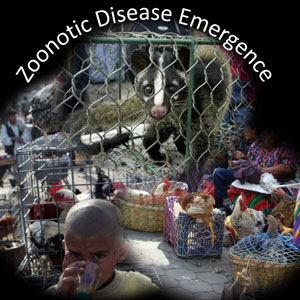WIFSS letter to editor makes NYT
Chris Brunner, March 3, 2014
The critical role that wildlife and domestic animals play in the spread of disease cannot be stressed enough. For example, the vehicle for SARS was likely the civet. Studies by the United States Agency for International Development from wildlife have yielded 300 new viruses with the potential to infect people.
Studies suggest that there is a potential of tens of thousands of additional, undiscovered, similar viruses. The emphasis now is to prevent these viruses from moving from “hot spots” driven by behavioral, epidemiological and economic factors associated with zoonotic disease emergence.
This endeavor requires teams of scientists with backgrounds in medicine, veterinary medicine, public health, wildlife biology, microbiology and animal science to tackle the complex environmental and ecological factors involved in preventing the rapid spread of these diseases to animal and human populations.
Thus, the continued funding of programs by U.S.A.I.D. and others will reduce pandemics and minimize the cost to global economies.
BENNIE I. OSBURN
Davis, Calif., Feb. 24, 2014
The writer, dean emeritus of the School of Veterinary Medicine at U.C. Davis, is director of outreach and training, Western Institute for Food Safety and Security.

